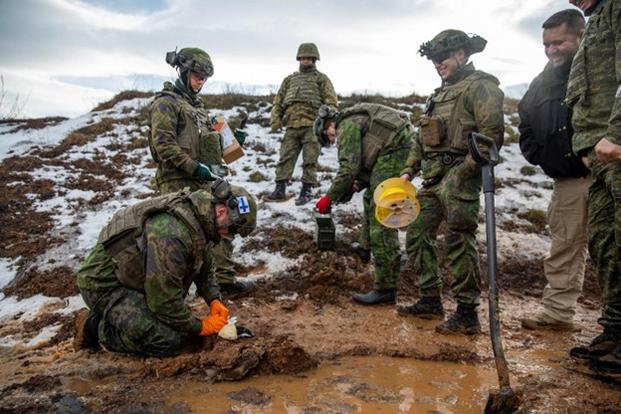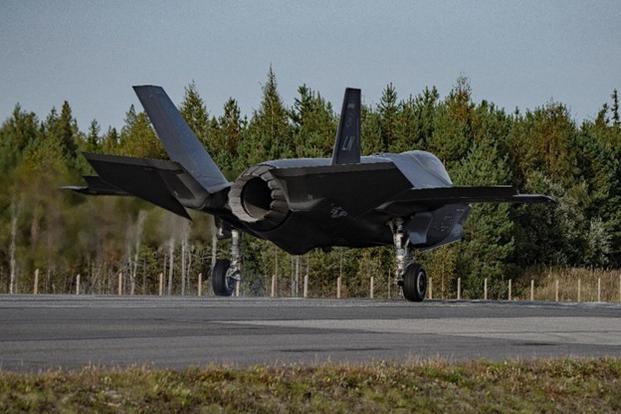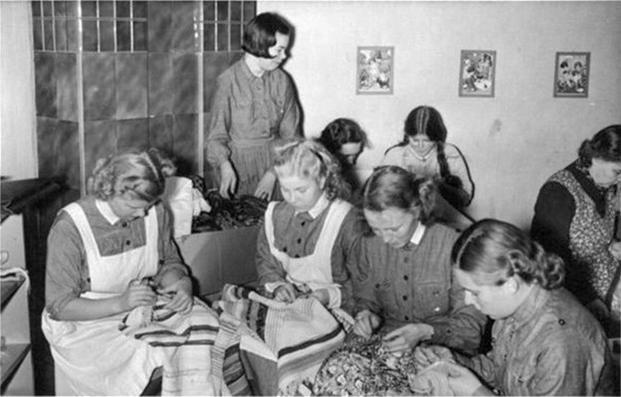When Finland joined NATO in 2023, the small Nordic nation brought with it one of Europe’s most comprehensive defense systems, built over decades of preparing for the worst along its border with Russia. Instead of a large standing army, Finland relies on universal conscription, a vast trained reserve pool, and a society where everyone has a role in national defense.
As Finnish Prime Minister Petteri Orpo put it in 2025: “By joining NATO, Finland strengthened its own security, but also the stability and security of the whole Alliance. We have over 1,300 kilometers of border with Russia, but we also have a robust national defense capability based on a conscription system, a large and well-trained reserve, and a strong will to defend our country.”
Citizen Soldiers
Finland’s conscription system is the backbone of its defense and a central deterrent against Russia. All men must serve after turning 18, while women may volunteer, and many do. Service lasts 165, 255, or 347 days depending on training and specialty, with the longest terms reserved for officer or advanced roles. After completing their duty, conscripts return to civilian life but remain in Finland’s reserve forces.
The scale is impressive. Finland can mobilize about 280,000 troops for wartime service, backed by a reserve of roughly 900,000 citizens. In a nation of 5.6 million, nearly one in six people has military training and can be called up if needed.
Finland is moving to raise the maximum reservist age from 60 to 65, a change that would add about 125,000 people and push the total reserve closer to one million by 2031. “By raising the maximum age of reservists, we are giving more people the possibility to participate in national defense,” Defense Minister Antti Häkkänen said.
In a general mobilization, Finland doesn’t have to scramble to train civilians. Hundreds of thousands of reservists are already trained, organized, and ready to deploy.

Security Woven Through Society
Finland doesn’t treat the military as separate from society. Under its concept of comprehensive security, every sector—energy, telecommunications, healthcare, and logistics—has a wartime role built in. Ministries run drills, companies prepare crisis plans with their employees, and civilians are trained to respond if an invasion occurs.
Russia’s invasion of Ukraine has shown that infrastructure and logistical hubs are among the first targets in war. Power grids, refineries, rail stations, and other civilian assets quickly become targets of opportunity. In Finland, civilians are told what to do if those systems are struck, and contingency plans for transport, fuel, and power are constantly updated to prepare for the worst-case scenario.
The Emergency Services Academy also provides preparedness training, including education for public administration, regional authorities, and other organizations, to operate under both normal and extreme conditions—such as open conflict. Many local first responder groups provide training to citizens to conduct search and rescue as well as medical assistance for those who may need it.
Last year, Finland also tested and prepared wartime agreements with private firms—over 1,000 contracts—to ensure industry and businesses can shift to wartime production or service support if needed. Lieutenant General Mikko Heiskanen told the Financial Times that Finland is “testing our strategic partners’ plans and readiness” and has activated some of those wartime contracts.
Another example of Finland’s approach is the National Defence Training Association, known as MPK. The voluntary group works closely with the Finnish Defence Forces to run courses for reservists and civilians alike, covering everything from first aid and civil protection to navigation and self-defense.
Many of its programs are ordered and funded by the Defence Forces, directly supporting local defense tasks and integrating civilians into wartime roles. Each year, about 50,000 volunteers take part, making MPK one of the country’s most important tools for weaving national defense into everyday life
This matters for NATO because potential strikes don’t only hurt civilians — they can slow or halt military forces moving to the front. Allied troops cannot afford those delays. Finland offsets that risk by preparing every level of society, from ordinary citizens to national companies, to brace for conflict.

A Country Ready for War
One of the most striking features of Finland’s defense is its adaptability. Just as its civil infrastructure is built to absorb damage, the military assumes its bases will be targeted in the opening hours of war.
The Air Force expects missile strikes on airfields as soon as fighting begins. To prepare, it holds annual BAANA exercises, converting rural highways into makeshift runways, folding lamp posts, and dispersing aircraft across the countryside. In 2024, U.S. F-35s joined Finnish pilots in Lapland, landing and taking off from highway strips in joint training with NATO partners.
Meanwhile, ammunition depots, checkpoints, and defensive positions are scattered across the country. If Finnish army bases are hit, the military can fall back to these sites, forcing an enemy to spread out to attack a wide range of targets.
Civilians are also trained to hunt, fight, and survive in a conflict. Finland has one of the highest rates of civilian gun ownership in Europe — a resource that history suggests could once again play a role in national defense.
History’s Lessons
Finland’s defensive strategy isn’t just theoretical — it's battle tested. In the Winter War of 1939–40, the country faced a Soviet invasion with far fewer troops and limited equipment. Finnish soldiers spread out through the forests, using the terrain and snow to conceal movements and protect vital equipment. Civilians made Molotov cocktails and donated materials to the war effort, while companies and organizations shifted production to supply the army with weapons and gear.
Finnish ski troops, ambushes in forests and along ridgelines, and constant attacks on supply lines inflicted heavy Soviet losses. The Red Army was forced to spread out across a logistical nightmare while assaulting fortified positions held by determined Finnish defenders. Although Finland ultimately ceded territory, it preserved its independence and delivered a hard lesson to Moscow.
That experience still shapes Finland’s doctrine. Terrain, cold weather, and infrastructure are treated as weapons against any invader. Reservists draw on lessons from the Winter War as they prepare, studying maps, practicing concealment, planning ambushes, and training their families to brace for conflict. The Finns call their encirclement methods “motti” tactics — a strategy that allowed them to cut off and destroy Soviet units many times their size.

Lessons for NATO
Finland’s accession to NATO added not just territory, but a battle-tested military doctrine. The alliance gained a partner that treats the prospect of war as a constant risk, not a distant possibility. Finland’s reserve depth, societal integration, and dispersed capabilities offer NATO a model to modernize its readiness across the alliance.
For NATO’s easternmost members and those near contested borders, change may be essential, especially as Russian drones and planes constantly test their borders. Allied nations must plan for disrupted logistics, prepare civilian systems that can keep running after being hit, and train for military operations launched from rural terrain. They must also strategize how best to call up reserve forces and mobilize them quickly and decisively.
Finland’s model may not fit every NATO country, but it offers a vital baseline. Its terrain, civil preparations, and history provide a clear example of how the alliance can counter Russia and its proxies.















